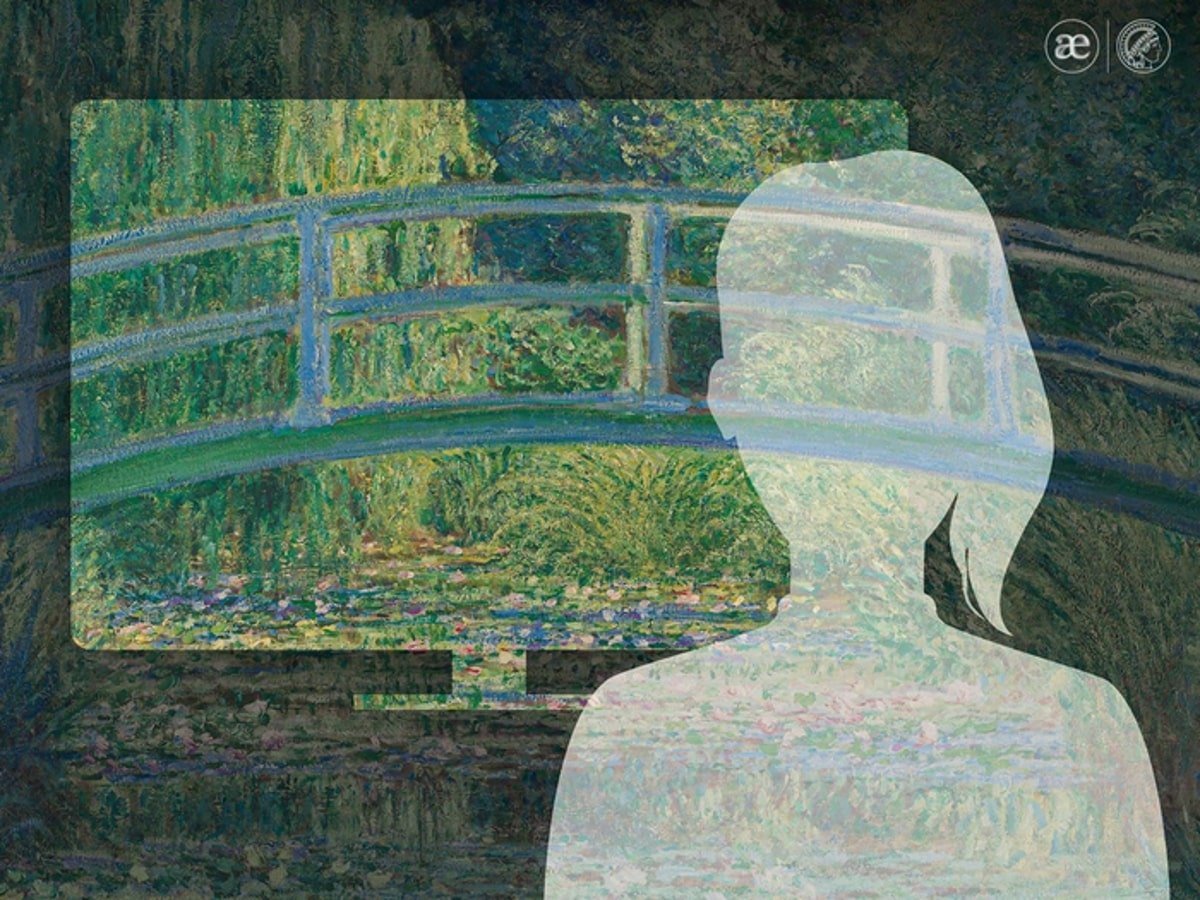Summary: Viewing interactive art online can improve our mood and reduce anxiety. People reported significant improvements in mood and anxiety after just a few minutes of viewing an interactive Monet Water Lily art exhibition from Google Arts and Culture.
The study also found that individuals with high levels of aesthetic responsiveness benefit more from online art viewing.
Key Findings:
- The study involved 240 participants who viewed an interactive Monet Water Lily art exhibition from Google Arts and Culture and filled out a questionnaire about their state of mind, pleasure, and meaningfulness of the experience.
- The study found that even a few minutes of online art viewing can significantly improve mood and anxiety.
- The researchers also found that individuals with high levels of aesthetic responsiveness benefit more from online art viewing, which expands insight into the benefits and limitations of art in digital media.
Source: Max Planck Institute
Art can have a positive effect on our mood. But does this also work when we look at paintings on a screen?
An international research team involving the University of Vienna, the Max Planck Institute for Psycholinguistics in Nijmegen and the Max Planck Institute for Empirical Aesthetics (MPIEA) in Frankfurt am Main decided to investigate this question.
The study was funded by the EU Horizon ART*IS Project. The results have now been published as an open access article in the journal Computers in Human Behavior.
240 study participants viewed an interactive Monet Water Lily art exhibition from Google Arts and Culture. By filling out a questionnaire, they provided information about their state of mind, how much pleasure they felt when looking at the pictures, and how meaningful they considered the experience to be. The results showed significant improvements in mood and anxiety after just a few minutes of viewing.
“Online art viewing is an untapped source of support for well-being that can be consumed as bite-sized bits of meaning-making and pleasure,” says MacKenzie Trupp, first author from the University of Vienna.
The study also found that some participants were more receptive to art than others and were able to benefit more. This advantage could be predicted using a metric called “aesthetic responsiveness.”
“Aesthetic responsiveness describes how people react to diverse aesthetic stimuli, like art and nature. The results showed that individuals with high levels of art and aesthetic responsiveness benefit more from online art viewing due to having more pleasurable and meaningful art experiences,” explains Edward A. Vessel of MPIEA, developer of the Aesthetic Responsiveness Assessment (AReA).

The findings of this study are particularly interesting for people who are unable to visit museums in person, such as those with health problems. Furthermore, the results suggest that interactive art exhibitions and similar online experiences should be designed with an awareness of individual differences in aesthetic responsiveness.
The study thus expands insight into the benefits and limitations of art in digital media and points the way for increasing the wellness potential of online art.
About this psychology and art research news
Author: Keyvan Sarkhosh
Source: Max Planck Institute
Contact: Keyvan Sarkhosh – Max Planck Institute
Image: The image is credited to MPI for Empirical Aesthetics / F. Bernoully
Original Research: Open access.
“Who benefits from online art viewing, and how: The role of pleasure, meaningfulness, and trait aesthetic responsiveness in computer-based art interventions for well-being” by Edward A. Vessel et al. Computers in Human Behavior
Abstract
Who benefits from online art viewing, and how: The role of pleasure, meaningfulness, and trait aesthetic responsiveness in computer-based art interventions for well-being
When experienced in-person, engagement with art has been associated with positive outcomes in well-being and mental health. However, especially in the last decade, art viewing, cultural engagement, and even ‘trips’ to museums have begun to take place online, via computers, smartphones, tablets, or in virtual reality.
Similarly, to what has been reported for in-person visits, online art engagements—easily accessible from personal devices—have also been associated to well-being impacts.
However, a broader understanding of for whom and how online-delivered art might have well-being impacts is still lacking. In the present study, we used a Monet interactive art exhibition from Google Arts and Culture to deepen our understanding of the role of pleasure, meaning, and individual differences in the responsiveness to art.
Beyond replicating the previous group-level effects, we confirmed our pre-registered hypothesis that trait-level inter-individual differences in aesthetic responsiveness predict some of the benefits that online art viewing has on well-being and further that such inter-individual differences at the trait level were mediated by subjective experiences of pleasure and especially meaningfulness felt during the online-art intervention.
The role that participants’ experiences play as a possible mechanism during art interventions is discussed in light of recent theoretical models.






